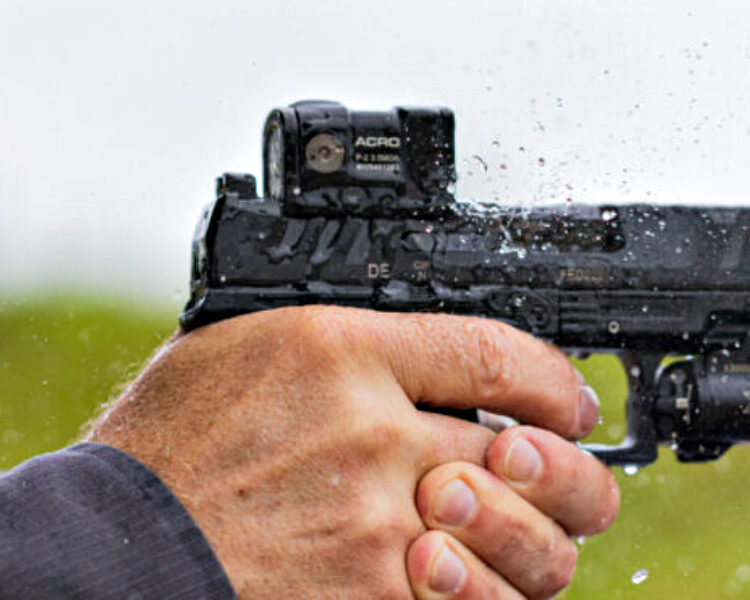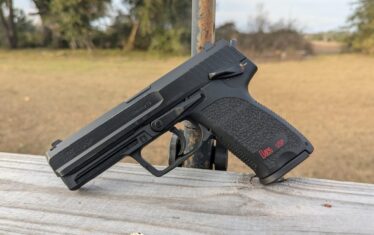All red dot sights are not created the same. Some are manufactured in China, some in the United States, and some in Sweden. Glass quality ranges from great to poor. There are red sights that are rugged, and reliable, and others fail quickly. Remember you are purchasing a red dot sight as a piece of life-saving equipment if, God forbid, you are ever in that deadly force scenario.
In our War HOGG Tactical courses, we have seen all types of different red dot sights and a lot of failures with them. This article will help educate you on the various types of red dot sights for a pistol to help you make the best decision.
There is still an argument in the shooting and law enforcement community that a red dot sight is not a good choice for your pistol. Some people say it is not as fast as iron sights, it will fail when you need it to work, and the list goes on. We had these same arguments in the 90s when talking about placing red dots on rifles. Today a red dot sight is the standard for your rifle so why not on a pistol?
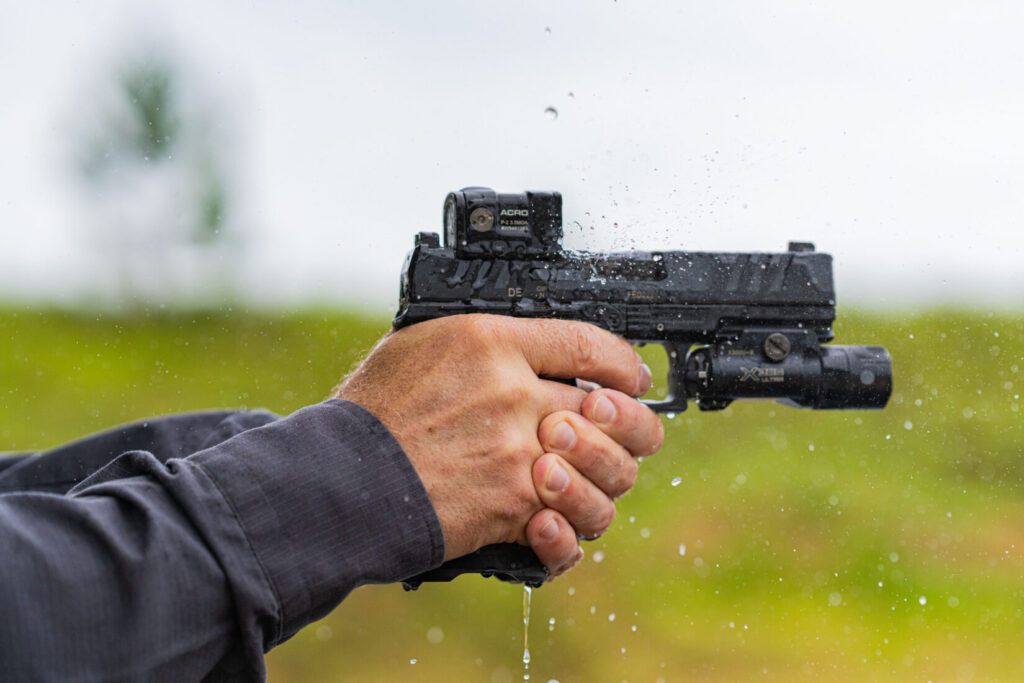
History of the Red Dot Sight
It all started in 1974 when technician and inventor Arne Ekstrand wanted to improve his accuracy on moving targets during hunting and while on the shooting range.
The idea of a red dot sight was hatched when Arne stood and shaved in front of the mirror and saw that the light reflection on the wall behind him did not move, regardless of whether he was moving his head. Arne got an idea and started sketching a concept that resulted in a prototype based on an empty toilet paper roll.
Aimpoint introduced the first electronic red dot sight in 1975, designed for rifles. It was not long until red dot sights found their way on pistols.
1980 saw the first Aimpoint Electronic used by Joe Pascarella to win the NRA Pistol Championships. In 1982 at the Bianchi Cup, about a dozen shooters competed with red dot sights. This would be the last year the competition was won with iron sights.
Jerry Barnhart brought the red dot to the United States Practical Shooting Association (USPSA) in 1990, winning the USPSA National Championship with his Tasco Pro Point red-dot-equipped pistol.
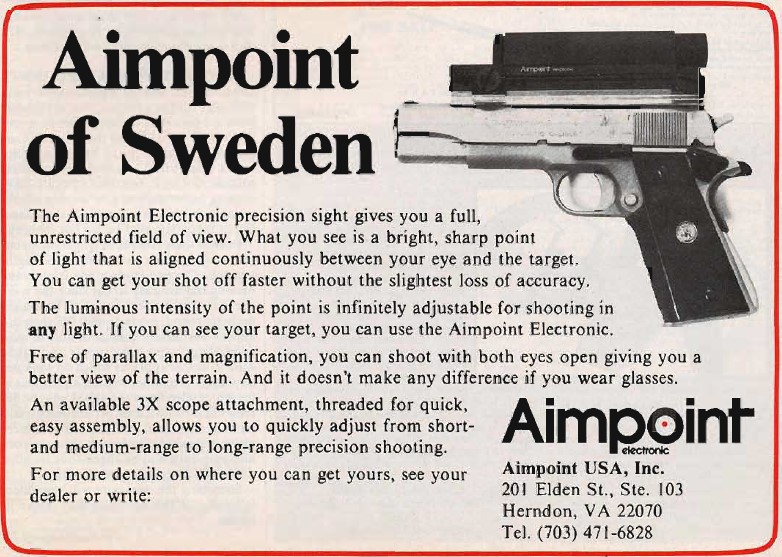
These shooters were using rifle red dots and making them work on pistols, which required special mounts and gunsmithing. They were also not practical for concealed carry, military, or law enforcement use due to their size. This changed in 1997 with Tasco introduced their open emitter Optima 2000 red dot sight for pistols, a small profile red dot that could be used in the armed professional role. At that time, it required your pistol slide to be modified to fit the pistol optic.
The game changer for the red dot pistol sight came in 2018 with Aimpoint’s Advanced Compact Reflex Optic (ACRO) enclosed red dot sight with a Picatinny mount. This is personally the pistol red dot I use. If you go shopping for one, you can use code warhogg1224 to save with Aimpoint.
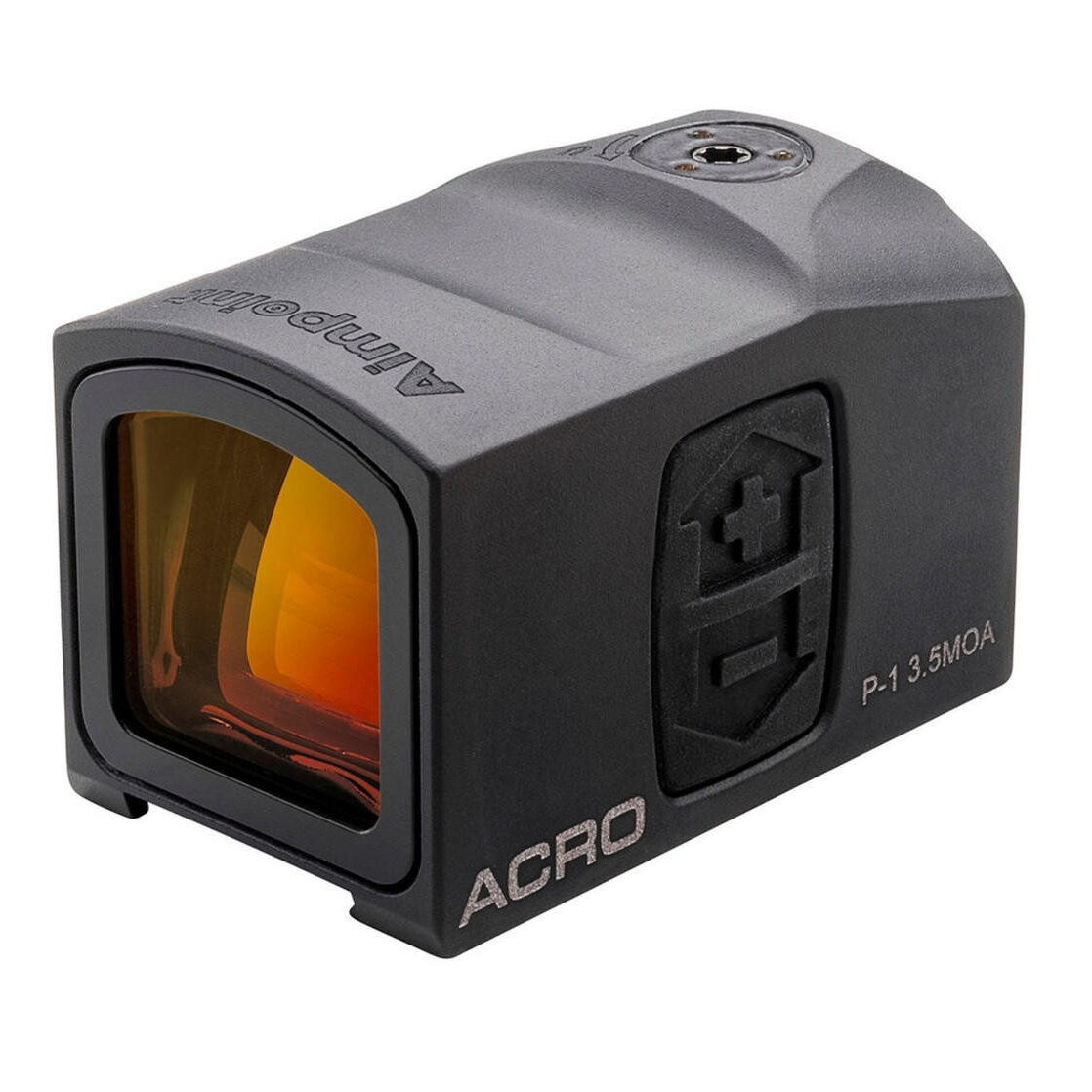
Understanding Red Dot Sights
There are two types of red dot sights for a pistol, an open emitter and an enclosed emitter. The emitter is what projects the Light Emitting Diode (LED) dot onto a reflective lens, thus placing the red dot in the optic glass.
Red dot sights have different reticles and dot sizes. There are also some “red dot sights” that emit a green dot. Some shooters, especially those with astigmatism, feel they see the green dot better.

Open Emitter
Open emitter red dot sights are the most common. Most shooters or Law Enforcement Officers don’t realize when they are purchasing or evaluating an open emitter red dot sight it has a built-in fail point. An open emitter is subject to failure due to its exposure to dirt, debris, water, etc. These optics may be cost-effective, but I would not bet my life on them.
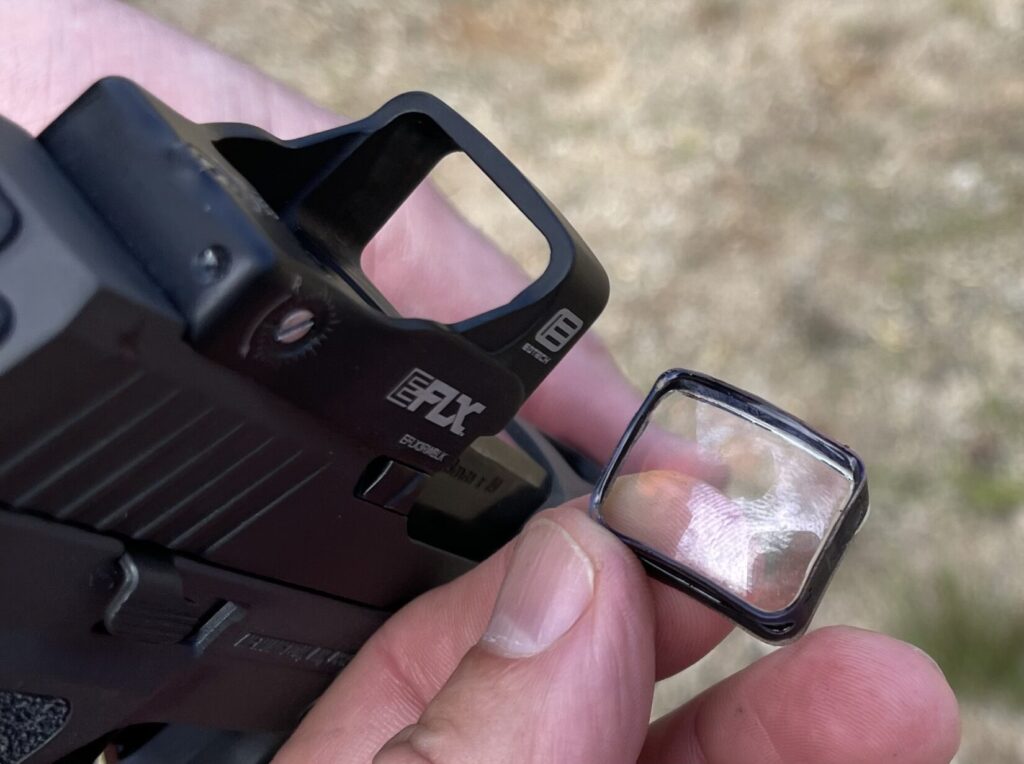
Enclosed Emitter
An enclosed emitter adds one more layer of safety to the shooter or law enforcement officer because the emitter is protected by its housing. Some people will argue that an enclosed emitter sight is harder to conceal, but I have no issues concealing my Aimpoint ACRO.
As for the durability of an enclosed emitter, if you get mud, snow, or other debris on the real glass, just wipe it off. This is a lot more difficult with an open emitter when just tenths of a second could make the difference between life and death. Your enclosed emitter optics also make it a lot easier to swap out the battery.
Add-Ons Equal Built-In Fail Points
Some red dot sights now have solar panels to “supposedly” increase battery life. Seeing how most of the time the pistol sits in a holster, I don’t see a benefit.
It has been my experience that these solar panels cause more issues than help. Especially with an enclosed red dot sight, when that solar panel breaks or gets a crack in it, now there is debris inside the red dot housing causing the shooter or law enforcement officer to have an intermittent red dot.
Another failure add-on is the “Shake Awake.” This is a device on some red dots that will turn the red dot on when it senses movement, after powering down from being dormant for a prescribed time. Again, the intent is to increase the battery life. To me, the shake awake is one more fail point built into the optic where it might not wake up when you need that red dot to save your life.
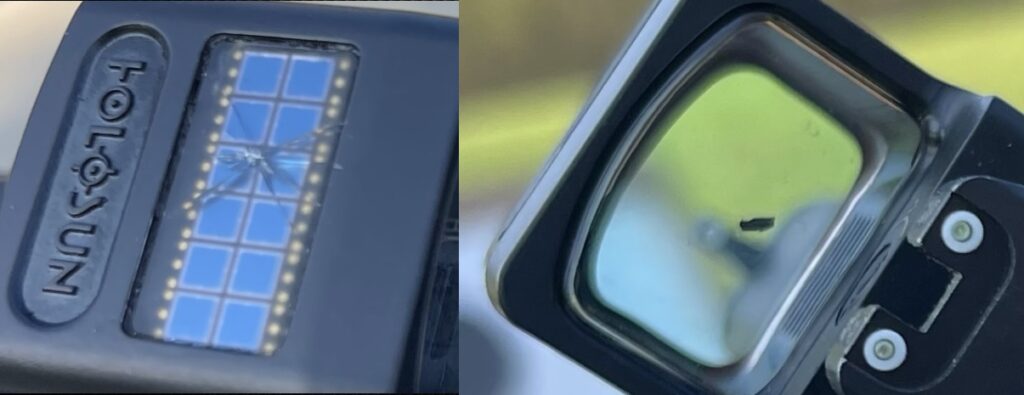
Mounting Options
Early on, mounting a red dot on a pistol required a gunsmith and special mounts because of the size of the optics. As optics got smaller, the slide of the pistol had to be cut for that optic.
Today, most pistols have the slides precut to accept a mounting plate for the optic. I am seeing an increase of optics shearing mounting screws at the optic mounting plate line. This mounting plate makes things easier, however, if you can have a direct mount this would be one less fail point.
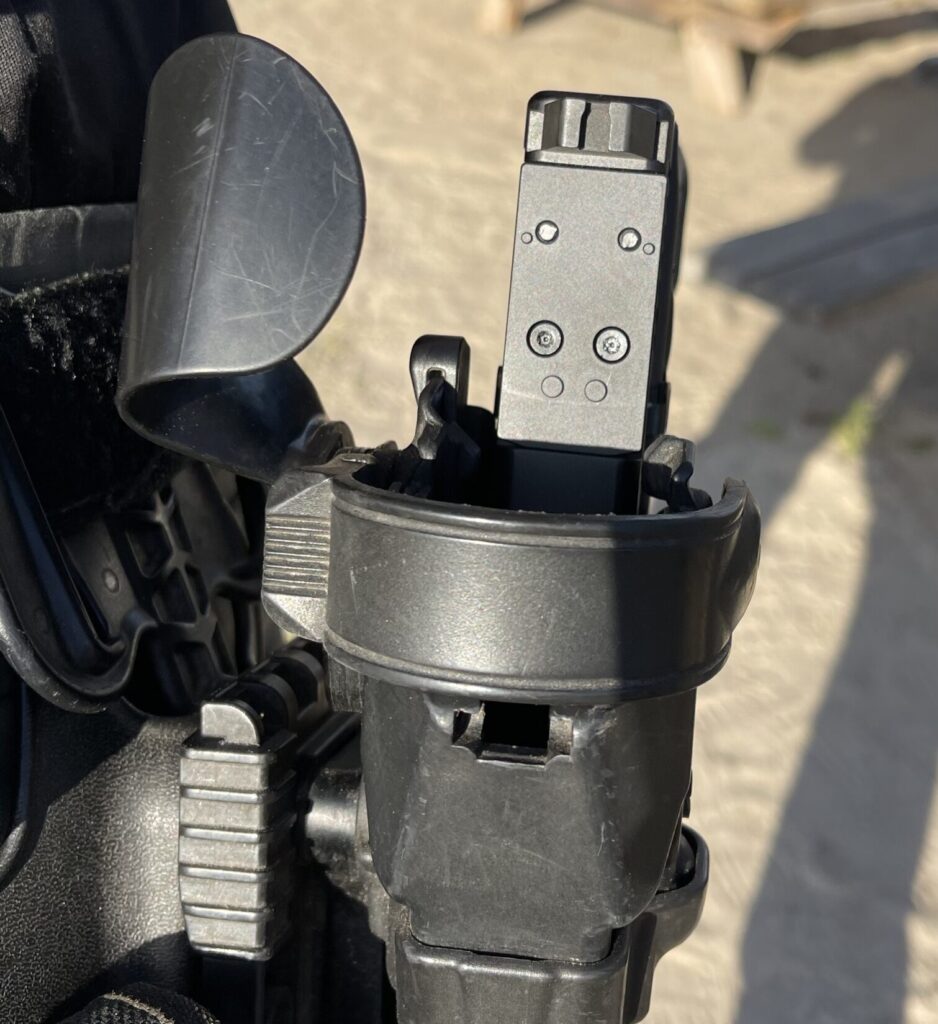
For example, the Walther PDP professional pistol already has a Picatinny cut on the slide for the Aimpoint ACRO, this is called a direct mount because no mounting plate is required and adds one more layer of mounting security.
Red dot pistol Training
Training is the one step of selecting a red dot sight that is often overlooked. Once you purchase your new red dot sight, get to a training course. Too many shooters get frustrated first shooting a red dot optic on a pistol because they are “fishing” for the dot. This means moving the pistol around hoping the red dot pops in the optics window.
During a War HOGG Tactical red dot course, we first shoot the War HOGG Self Eval to see where a student’s performance is at. We record this data in The Firearms Training Notebook. Next, we instruct the students on the fundamentals of pistol marksmanship and spend time on the pistol presentation. We teach our students to look for their reference points during the presentation.
After some dry and live fire pistol presentations we see an immediate improvement in their efficiency in their red dot pistol presentation and the proof is in the data we collected during the course.
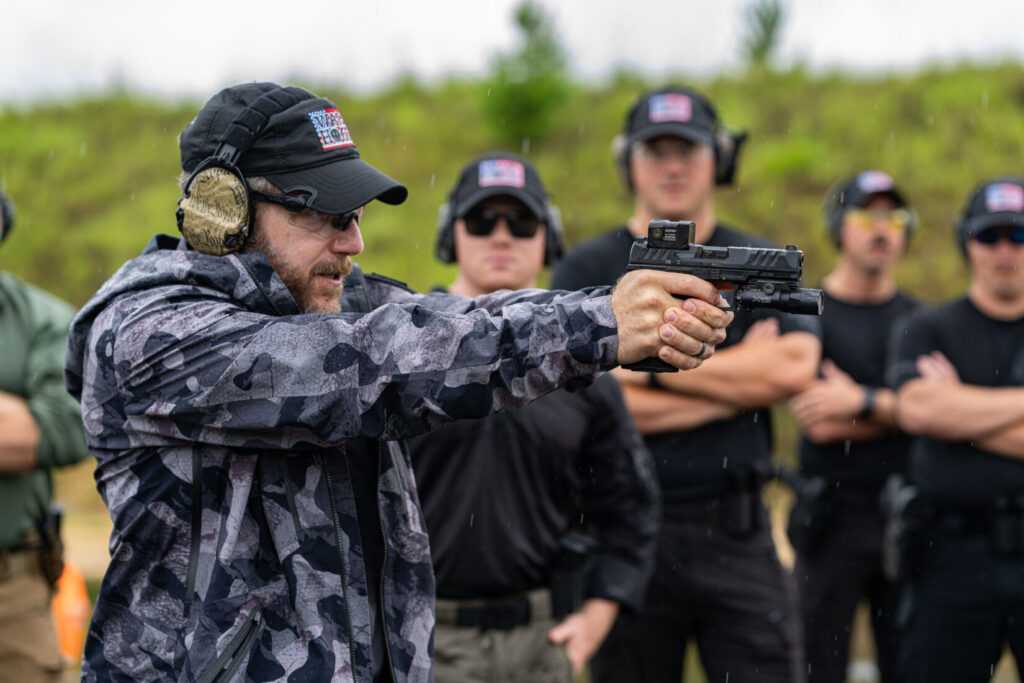
Conclusion: be educated
You must make sure you are an educated consumer when purchasing this piece of life-saving equipment.
Which optic should you choose? At the end of the day, there is no right and wrong answer, it’s going to be your personal preference. Don’t always use a price point to make your decision. Be educated and if need be save up a little more money to purchase that piece of rugged, high-quality, life-saving equipment to are attaching to your pistol.
Don’t forget to get some proper red dot pistol training.
Train Hard, Stay Safe, and see you On The Range – Rick





